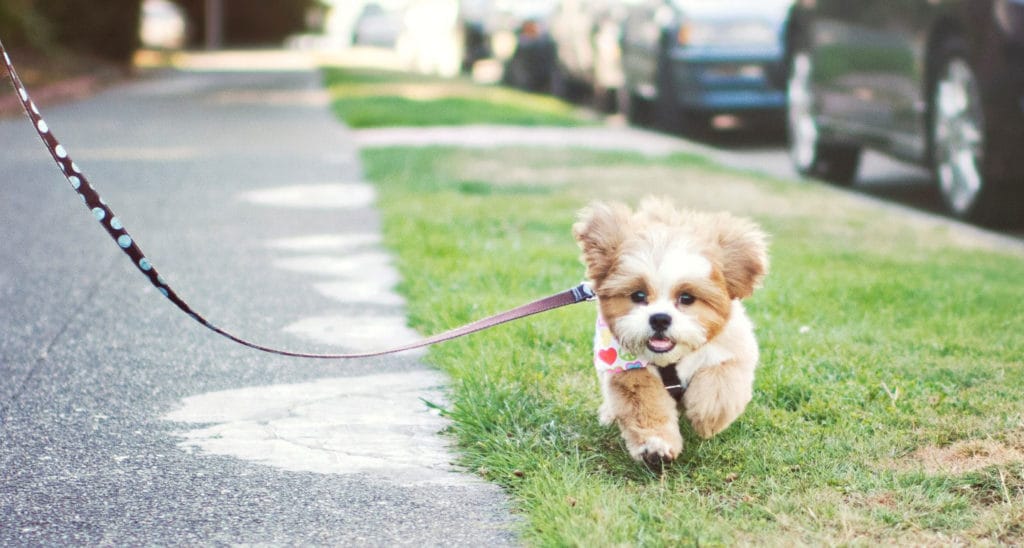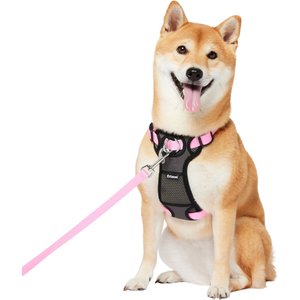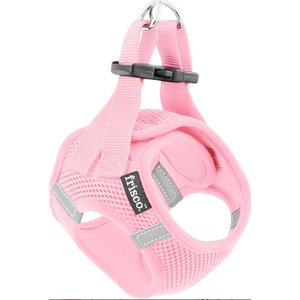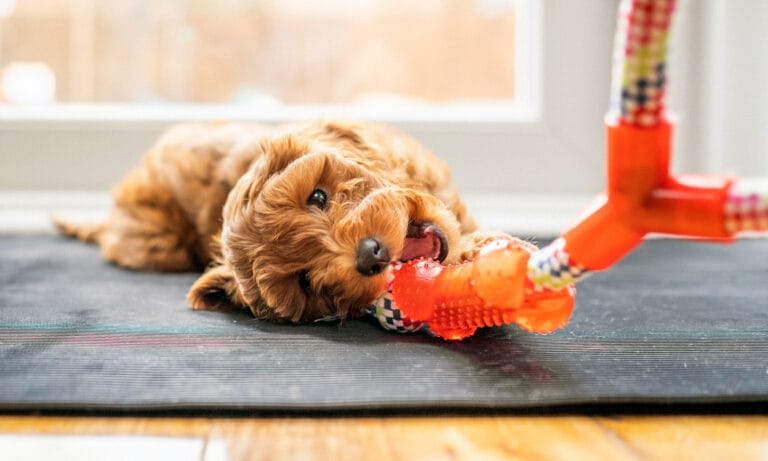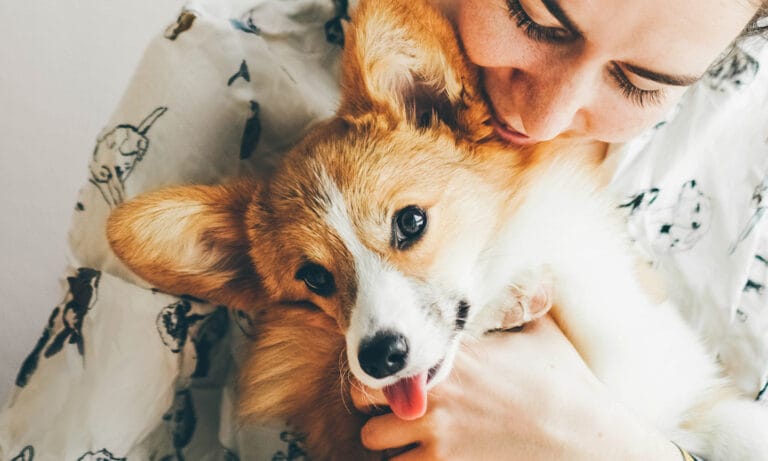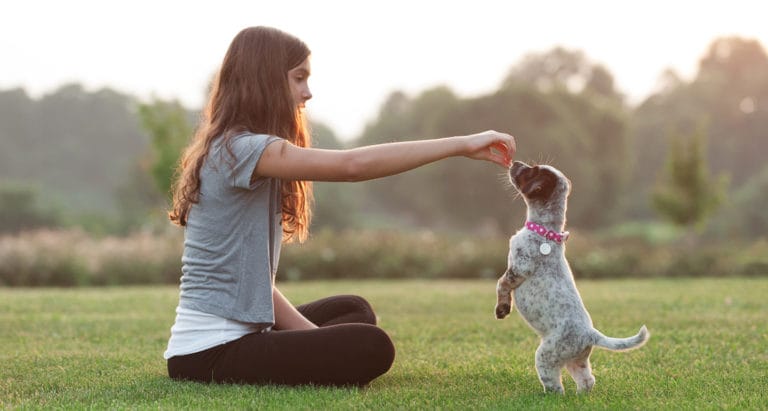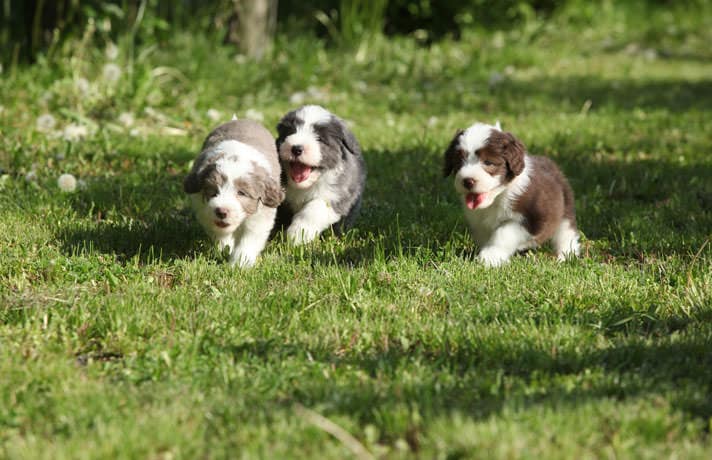Puppies' energy levels can seem near-infinite—they seem to want to play 24-7! Taking your pup for a walk is an easy way to let them release those wiggles, as well as to work on skills like leash training and potty training. But how often should you walk your puppy? The answer is different for each pet—here's how to know your pup's exercise needs.
How Many Walks Does My Puppy Need?
Puppies need to go on walks for several reasons: exercise, socialization, and mental stimulation, as well as potty training. Because of this, it's best to give your new puppy several walks throughout the day instead of just one or two long walks as you would an adult dog. We're breaking down each type of walk your pup needs:
1 Potty Training Walks
These tend to be short walks—just enough time for your pup to do their business.
During potty training, it's best to walk your puppy on a leash—even if you're just in your fenced-in backyard. Staying close allows you to make sure they go to the bathroom each and every time, and also means you're nearby to to reward them immediately for pottying outside—extremely important for puppy training.
By walking together to the potty, you can also establish a particular spot in the yard for your puppy to use. Not only does this create a routine for your puppy, but it also helps contain the waste to a single spot.
- How often should I walk my puppy for potty training? Start with at least once every 30 minutes. Remember this general rule of thumb: A puppy's "hold time" is their age in months translated to hours—so if your puppy is 3 months of age, they can hold it for 3 hours maximum.
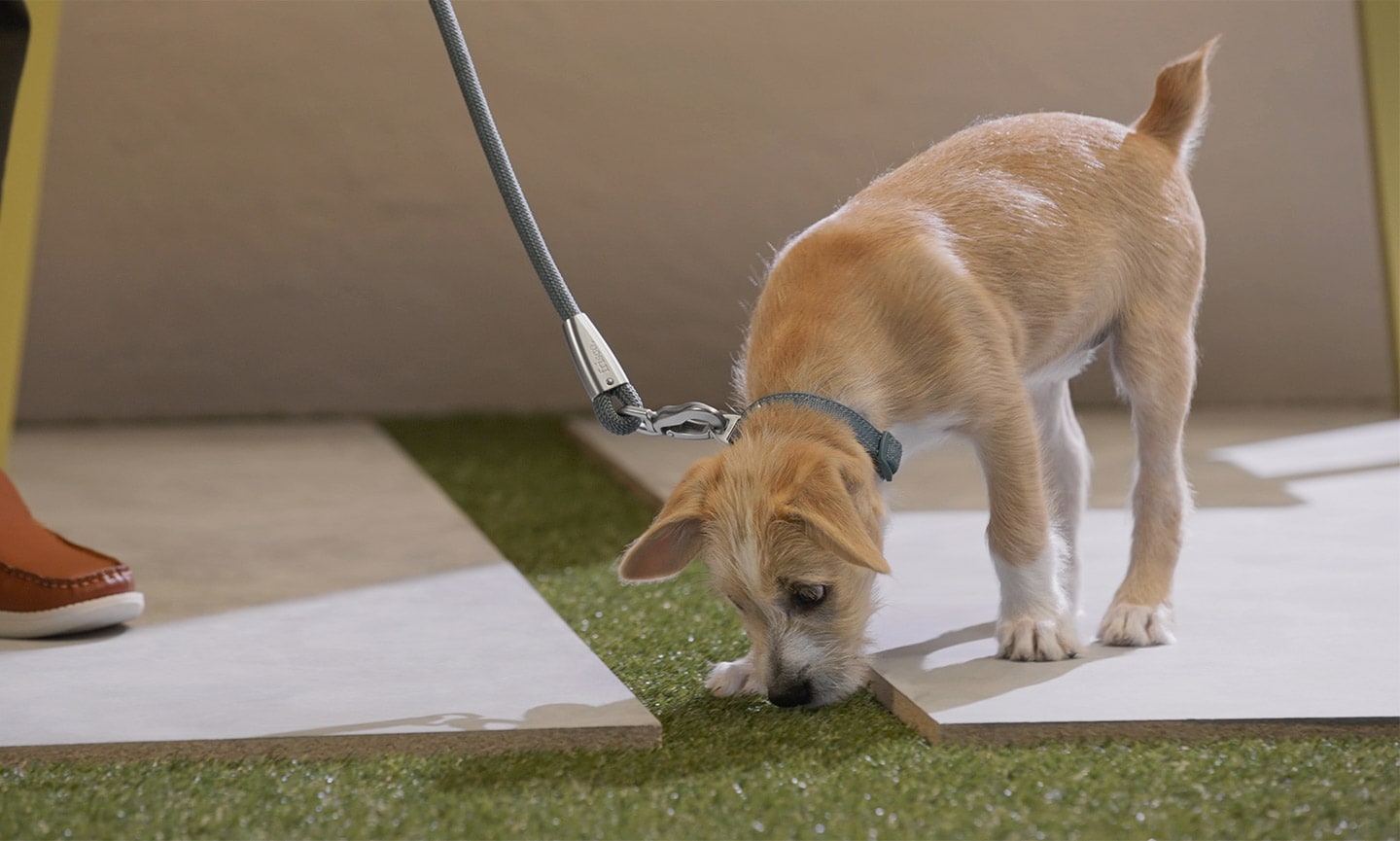
Take Your Puppy for a Potty Training Walk When:
- They wake up in the morning and after every nap.
- After each meal.
- After a good play/exercise session.
- Every time they indicate they have to go to the bathroom.
2 Exercise, Socialization And Mental Stimulation Walks
This type of walk will help provide your high-energy puppy with the exercise they need as well as socialization, aka exposing them to new people, places and things, which helps them get comfortable with change and stay calm as they grow into an adult.
Make sure to watch your puppy's body language to ensure they're comfortable in new settings. If they haven't had their core vaccinations, be careful where you take them. You’ll want to avoid places where there might be other dogs who aren’t vaccinated.
Get more puppy socialization tips here.
- How often should I walk my puppy for exercise and socialization? Try to take one good, mentally stimulating walk each day.
Great Places for an Exercise/Socialization Walk:
- Take a walk around the block: This allows your puppy to become familiar with your neighborhood.
- Go to the park: A change of scenery is good for your puppy. New textures, smells and people are just a short trip away!
- Say ‘hi’ to neighbors: Walk around town or the local ball field and have new people offer your puppy a treat.
How long should you walk your puppy? There's no hard rule about distance or number of minutes of exercise, says Dr. Kelley Pozza-Adams, DVM, of Tremont Animal Clinic in Cleveland, Ohio, but keep these guidelines in mind:
- Do not over-exercise your puppy. Too much walking can be bad for pups, so if they seem tired, then it is time to stop.
- Avoid running or types of exercise with hard impact while your dog is growing.
- Start out with easy walks around the block, gradually building up to longer walks.
Remember that your dog's breed also affects how much they're able to do. Smaller dogs like Chihuahuas or Pugs won't be able to travel with their short legs, while larger breeds like Great Danes get around a lot faster. And if you've got a breed developed for herding (think: Border Collies), expect to cover a lot of ground!
Puppy Walking Gear
Dr. Pozza-Adams recommends using these products to walk your dog:
- A leash: We mean, obviously! How else are you going to keep your curious pup by your side? A standard 6-foot leash is best for most puppies.
- A harness: Puppies who aren't leash-trained can be prone to pulling. If their leash is attached to their collar, this can put unhealthy stress on their neck. A harness better distributes the pressure so your puppy is more comfortable. Some harnesses also have clips at the front of the chest, which can help deter your puppy from pulling.
What not to use? Chain or prong collars, which can cause damage or irritation to the throat.
More Tips for New Puppy Parents:
Share:
